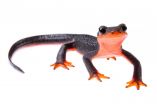(Press-News.org) Not every mom and dad agree on how their offspring should behave. But in genetics as in life, parenting is about knowing when your voice needs to be heard, and the best ways of doing so. Typically, compromise reigns, and one copy of each gene is inherited from each parent so that the two contribute equally to the traits who make us who we are. Occasionally, a mechanism called genomic imprinting, first described 30 years ago, allows just one parent to be heard by completely silencing the other.
Now, researchers at the University of Utah School of Medicine report on a version of genetic parental control in mice that is more targeted, and subtle. Published in Cell Reports, so-called noncanonical imprinting is particularly prevalent in the brain, and skews the genetic message in subpopulations of cells so that mom, or dad, has a stronger say. The mechanism can influence offspring behavior, and because it is observed more frequently than classic imprinting, appears to be preferred.
"The field has traditionally thought of genetics at the level of the whole animal, and sometimes the tissue. We're documenting it at the cellular level," says senior author Christopher Gregg, Ph.D., assistant professor of neurobiology and anatomy. "Genetics is much more complicated than we thought."
A case in point is the impact of noncanonical signaling on motivated behaviors that prompt a timid mouse to leave its protective shelter when it needs to search for food. Five genes preferably controlled by mom, or dad, cluster within a biochemical pathway that creates serotonin and dopamine, neurochemicals that affect mood and behavior. The imprinting is further customized by being enriched in subregions of the brain known to control behavior (arcuate nucleus, and dorsal raphe nucleus). When the scientists remove the active, maternal copy of one of the genes, tyrosine hydroxylase (Th), they see a modest but consistent increase in the amount of time the mice spend out in the open, showing it controls the behavior. By contrast, mice with their silenced, paternal copy removed show no behavioral changes.
"We speculate that a better strategy for imprinting is to do it in the cells that are needed to achieve the desired effect, rather than to do it in every tissue," says Gregg.
In total, 80 percent of 210 imprinted genes analyzed - the vast majority - were subject to noncanonical imprinting. 64 percent of those genes showed parental bias exclusively in the brain or subregions of the brain, and not in non-neural tissues, liver or muscle.
A novel method that visualizes active copies of genes shows that the bias stems from differences within populations of cells. While canonically imprinted genes have just one active copy in nearly every cell examined, noncanonically imprinted genes have one active copy in subsets of cells, and two active copies in others.
The results expand on previous work by another group who found a gene that imprints in specific neurons, and is reported to be associated with autism when mutated. This and the current study's behavior experiments highlight that in addition to fine-tuning parental control, noncanonical imprinting may have a downside.
Gregg speculates that the targeted form of imprinting gives rise to "high-risk" neurons that are especially vulnerable to mutations inherited from one parent because they don't express a second, healthy back-up copy to compensate for the mistake. "We think that subpopulations of cells that preferentially express mutated genes could disproportionately contribute to brain disorders such as autism," he says. Future research will test the hypothesis and novel therapies to overcome the deficits.
INFORMATION:
The research was supported by the New York Stem Cell foundation, National Institutes of Health, Swiss National Science Foundation, and The Klarman Foundation for Eating Disorders
"Noncanonical genomic imprinting effects in offspring" by Paul Bonthuis, Wei-Chao Huang, Cornelia Stacher Hörndli, Elliott Ferris, Tong Cheng, and Christopher Gregg, will be published in Cell Reports online, July 30, 2015
If the technical features of a new camera delight the tech experts but leave consumers scratching their heads, how should a retailer's website present those views and what sales results could it expect?
A paper to be published in the September issue of the Journal of Retailing provides insights on the relatively new phenomenon of online user reviews.
In "User Reviews Variance, Critic Reviews Variance, and Product Sales: An Exploration of Customer Breadth and Depth Effects," Feng Wang of Hunan University, Xuefeng Liu of Loyola University Maryland, and Eric Fang of ...
A national coalition of experts that includes two University of Washington researchers has a bold plan to reduce behavioral health problems such as violence and depression among young people across the country by 20 percent in a decade.
And their proposal rests on one simple principle: prevention.
The group's paper, recently published on the National Academy of Medicine website, recommends implementing evidence-based prevention programs on a national scale to reduce a host of problems ranging from drinking to delinquent behavior, anxiety and risky driving. It notes ...
Many physicians are pushing back against or debating new requirements for maintaining medical board certifications, which affect more than 250,000 physicians nationwide. Now, a new study by UC San Francisco and Stanford University researchers concludes that the cost of implementing the most recent requirements will be an estimated $5.7 billion over the next 10 years.
In their study, published online on July 27, 2015, in the Annals of Internal Medicine, the researchers found that most costs of the latest maintenance-of-certification (MOC) requirements implemented for ...
Athens, Ga. - An international team of researchers led by scientists at the University of Georgia has discovered how parasitic plants, which steal their nutrients from another living plant, evolved the ability to detect and attack their hosts. Their findings, published recently in the journal Science, could lead to new techniques to control the thieving weeds.
There are thousands of parasitic plant species, but the most burdensome for humans are those that infiltrate farmland and destroy crops. Parasite infestations reduce crop yields by billions of dollars each year, ...
In cells with latent HIV infection, the virus is dormant, and such cells are therefore not attacked by the immune system or by standard antiretroviral therapy. To eradicate the virus from the human body and truly cure a patient, reservoirs of latently infected cells need to be activated and eliminated "the so-called "kick-and-kill" approach. Two studies published on July 30th in PLOS Pathogens report encouraging results on the use of a combination of several drugs to efficiently reactivate HIV in cells with latent infection.
Please contact plospathogens@plos.org if you ...
A deadly fungus identified in 2013 could devastate native salamander populations in North America unless U.S. officials make an immediate effort to halt salamander importation, according to an urgent new report published today in the journal Science.
San Francisco State University biologist Vance Vredenburg, his graduate student Tiffany Yap and their colleagues at the University of California, Berkeley and the University of California, Los Angeles say the southeastern United States (particularly the southern extent of the Appalachian Mountain range and its southern neighboring ...
Scientists at Columbia University's Mailman School of Public Health and the School of Public Health of Li Ka Shing Faculty of Medicine at the University of Hong Kong have shown for the first time that it is possible to predict the timing and intensity of influenza outbreaks in subtropical climates like Hong Kong where flu seasons can occur at different times and more than once during a year. Results appear online in the journal PLOS Computational Biology.
Since the 2013-2014 season, the Mailman School scientists have published weekly regional flu forecasts for over 100 ...
Worldwide, influenza kills an estimated 250,000 to 500,000 people each year. A new study publishing in PLOS Computational Biology has shown that for the first time it is possible to predict the timing and intensity of influenza outbreaks in subtropical climates, such as Hong Kong, where flu seasons can occur at irregular intervals year-round.
The team of scientists from Columbia University's Mailman School of Public Health and the University of Hong Kong used data from a network of 50 outpatient clinics and laboratory reports in Hong Kong from 1998 to 2013 as a test case ...
This news release is available in Japanese.
During the first ever landing of a probe on a comet, the world held its breath as Philae survived a bouncy landing on comet 67P/Churyumov-Gerasimenko on November 12, 2014. This special issue of Science highlights seven new studies that delve further into the data that has been transmitted back by Philae. In a detailed account, Jens Biele et al. describe the critical moments where Philae descends on 67P, only to bounce off the soft, intended landing area and finally settle on a harder surface farther away. Analysis ...
This news release is available in Japanese.
By studying how water striders jump on water, Je-Sung Koh and colleagues have created a robot that can successfully launch itself from the surface of water. As the team watched the water strider jump on water surfaces using high-speed cameras, they noticed that the long legs accelerate gradually, so that the water surface doesn't retreat too quickly and lose contact with the legs. Using a theoretical model of a flexible cylinder floating on liquid, the authors found that the maximum force of the water striders' legs is always ...




